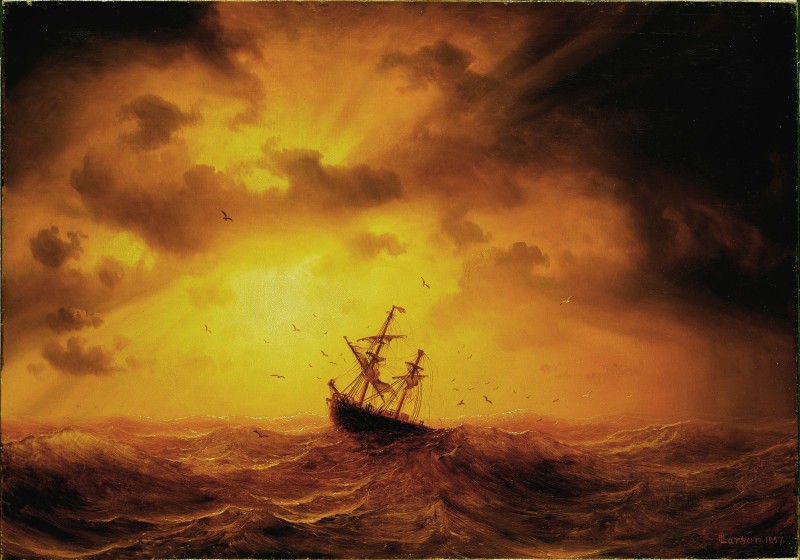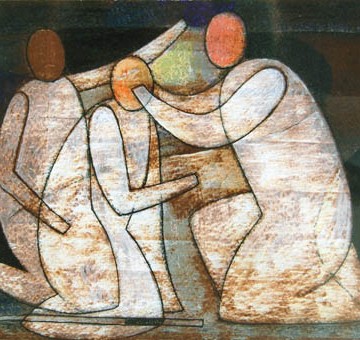"I adore art...when I am alone with my
notes, my heart pounds and the tears
stream from my eyes, and my emotion
and my joys are too much to bare."
AUTHOR: Giuseppe Verdi
MEANING OF THE QUOTE:
"The emotion and joy felt from the
act of creating art is totally fulfilling."
SYMPHONY NO. 59 (ca. 1768)
in A MAJOR HOB..I:59
"Feuer" (Fire)
Adam Fischer, Conductor
Austro - Hungarian Haydn Orchestra
II. Andante o più tosto Allegretto
| http://bestclassicaltunes.com/TuneDetails.aspx?TuneCode=HaydnSym59M2 |
III. Menuetto – Trio
| http://bestclassicaltunes.com/TuneDetails.aspx?TuneCode=HaydnSym59M3 |
IV. Allegro assai
| http://bestclassicaltunes.com/TuneDetails.aspx?TuneCode=HaydnSym59M4 |

The abounding energy in the first movement
of this symphony may have led to its nickname
"Fire." Some authorities suggest though that
the name "Fire" is connected to (or with) a
Haydn marionette opera entitled Die
Feuerbrunst (literally Fire-Love), being
performed at Esterhaza Palace to which this
symphony may have originally been its overture.
Haydn wrote his operas primarily for
performance in the private theater of his
patron the Hungarian Prince Eszterhazy.
The Eszterhaza palace complex included an
elaborate, large-scale marionette theater. For
the sophisticated marionette shows Haydn was
expected to provide instrumental and vocal
music. The scores of Haydn's puppet singspiels
have been largely lost. This is one of only two
such surviving works that has been
reconstructed for modern performance.
During the composer’s lifetime the work was
dubbed the Feuer Sinfonia on at least one set of
orchestral parts used by the composer himself.
The handwritten copy of the manuscript, now at
Yale University, was prepared during Haydn's
lifetime from the original which has been lost.
The copy was prepared by Johann Traeg, a
Viennese publisher, who owned at least half a
dozen original Haydn manuscripts by the end of
the eighteenth century. A difference exists
between the name Haydn gave the Opera and
that given to it by the Traeg Catalogue, in which
it is called "Die Feuerbrunst" (The Fire") Haydn
called it Die Feuersbrunst, oder das abgebrannte
Haus ("The Conflagration, or the House that
Burned Down," 1776 - 77).
"Popular Titles And Subtitles Of Musical Composition"
by Freda Pastor Berkowitz The Scarecrow Press, Inc. New York 1962
http://www.fjhaydn.com/my-blog/2014/08/
http://wwuh.org/index.php?q=book/export/html/346
http://www.pdf-noten.com/pdf/Hdn_Opera%208_en.pdf
by Freda Pastor Berkowitz The Scarecrow Press, Inc. New York 1962
http://www.fjhaydn.com/my-blog/2014/08/
http://wwuh.org/index.php?q=book/export/html/346
http://www.pdf-noten.com/pdf/Hdn_Opera%208_en.pdf
SYMPHONY NO. 59 (ca. 1768)
in A MAJOR HOB. I:59
"Feuer" (Fire)
David Blum, Conductor
Esterhazy Orchestra
I. Presto
II. Andante o più tosto Allegretto 5:46
III. Menuetto – Trio 13:30
IV. Allegro assai 17:17

II. Andante o più tosto Allegretto 5:46
III. Menuetto – Trio 13:30
IV. Allegro assai 17:17
LINKS

GRANADA ADV. STRINGS
http://www.allmusic.com/album/joseph-haydn-die-feuerbrunst-marionetten-singspiel-mw0001860471
http://en.wikipedia.org/wiki/Symphony_No._59_%28Haydn%29
https://archive.org/stream/populartitlesand010474mbp/populartitlesand010474mbp_djvu.txt
http://www.leedsconcertseason.com/MODULES/NEWS/LICS_NEWS
http://en.wikipedia.org/wiki/Symphony_No._59_%28Haydn%29
https://archive.org/stream/populartitlesand010474mbp/populartitlesand010474mbp_djvu.txt
http://www.leedsconcertseason.com/MODULES/NEWS/LICS_NEWS
moduleASP/NEWSMOD_newsitem.asp?itemid=1027&source=
http://muswrite.blogspot.com/2014/10/haydn-symphony-no-59-in-major-fire.html
http://muswrite.blogspot.com/2014/10/haydn-symphony-no-59-in-major-fire.html
GRANADA ADV. STRINGS
1. A MAJOR SCALE 2 OCTAVES
a. Slurring 2 WB
2. VIVA LA VIDA
INTRO. TO INSTRUMENTS
1. KEYBOARD (RECITAL PRACTICE)
a. America
b. Yankee Doodle
a. America
b. Yankee Doodle
GRANADA BEG. STRINGS
1. MAJOR SCALES G, D, A
a. Slowly rhythm
b. Slurring 2 WB
a. Slowly rhythm
b. Slurring 2 WB
2. CIDER HOUSE RULES
a. Worked extensively on last section bowings and bow placements
a. Worked extensively on last section bowings and bow placements
HILLVIEW ORCHESTRA
1. LAS MANANITAS II
1. LAS MANANITAS II

.jpg)

.jpg)



